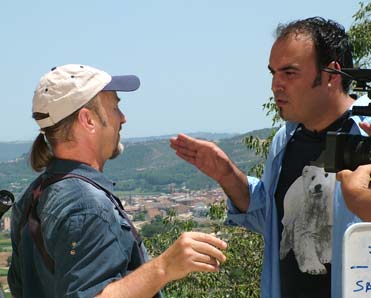
Spplllppp!
Aquest dilluns 17 d’agost en TV3 va emetre el programa “Quin país!” presentat per en Llucià Ferrer. El programa va presentar el poble de Montsonís, a prop d’Artesa de Segre. Els televidents vam tindre la oportunitat de veure el castell, alguna de les coves i alguns personatges interessants del poble, a més de sentir explicacions sobre regals inútils, visites al castell, un itinerari de tir amb arc i sortides per observar ocells portades a terme en anglés.
Per aquest últim em van demanar que vingués a una entrevista amb en Llucià Ferrer, antic presentador de ràdio de RAC 105.
Vam passar una estona força distesa, i a en Llucià no li va costar massa demanar coses que en una entrevista formal no s’acostuma a demanar: imitacions de les veus d’alguns ocells. Vam acabar fent l’oriol i el puput (fàcils), i al final, la piece de resistance, el sisó Tetrax tetrax.
Voleu veure com vam plasmar la parada nupcial del sisó? Cliqueu en el següent enllaç per veure el programa:
El sisó segons en Steve i en Llucià Ferrer
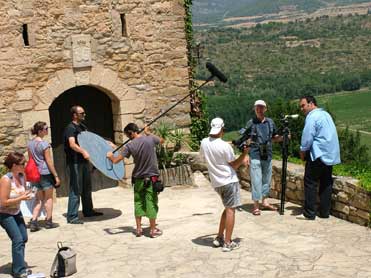
Darrere de les escenes
Posted in Personal favourites | No Comments »
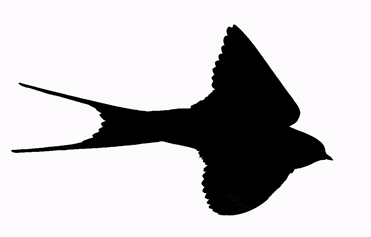
Early on Saturday morning (15th August) while out picking Blackberries with the family (they ripen earlier here than in the UK) a familiar call made me look up and spot 2 Red-rumped Swallows near Alòs de Balaguer. A pretty unusual sighting and a new one for my rather neglected Hotspot list, now standing at 196 species since the beginning of the year.
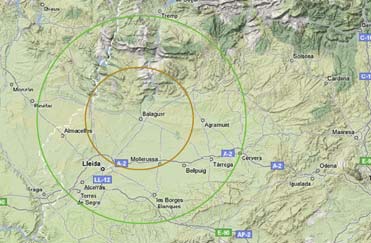
The BirdingInSpain.com hotspot
But that’s not all: we had a pleasant paddle and then strolled in search of a picnic site – somewhere cool and shady, as temperatures were raging close to 40ºC. Well, I was more than a little surprised to see a Plain Tiger Danaus chrysippus fluttering around a roadside verge. Only the second time I’ve seen the species, and less than a month after my first observation in the Ebro delta!
It just goes to show that you should never leave your binoculars at home, even if you’re only going blackberry picking with the family.
The Red-rumped Swallow in northeast Spain
Red-rumped Swallow Hirundo daurica
The Red-rumped Swallow is a summer visitor to northeast Spain from mid-March to October. Scarce and localised as a breeding bird, it is a regular but uncommon migrant at coastal locations. In recent years it has undergone a range expansion in the region, with breeding proven or suspected in Montsec, Sierra de Guara and the Lleida drylands.
Birding itineraries where you can observe the Red-rumped Swallow:
Cap de Creus, Aiguamölls of Empordà, Montgrí massif, Prades and Montsant ranges, River Ebro, Drylands of Lleida.
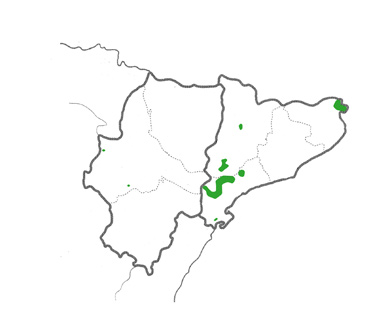
Distribution map of Red-rumped Swallow in northeast Spain. We’ll have to fill in a few more green blobs.
Posted in Birds in Spain | No Comments »
Descendants of the British House Mouse are killing huge numbers of albatrosses, petrels and shearwaters every year in British Overseas Territories and British Protectorates. Yes, MICE! They gnaw at and eventually eat defenceless chicks on the nest.
If you are a British resident or expat then you can sign the petition requesting that the British government dedicate sufficient economic resources to overcome this macabre situation.
Click here to read and sign the petition.
Posted in General | No Comments »
Painted Lady butterflies invaded Europe in their millions this spring, astounding many observers by the sheer volume of their migration. However, the usual time for a birder to be showing interest in butterflies is the summer: there’s more butterfly and less bird activity.
Ebro Delta, mid-July. With a young British birder, Max Levy and his parents. Over two days we saw at least a dozen of these handsome butterflies, which I initially identified as Monarchs Danaus plexippus.
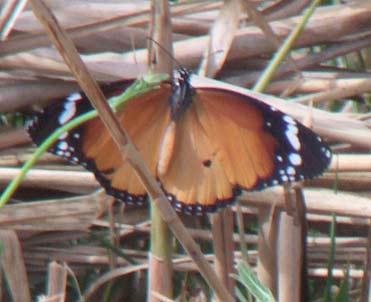
Max spotted the first one on 18th July and then we saw about a dozen the next day. I got rather excited and subsequently reported our “Monarch” sightings on a couple of forums. Luckily there are some diligent and knowledgeable forum-goers out there, and I was promptly redirected to the right identification: Plain Tiger Danaus chrysippus.
Both of these butterflies breed in the Canary Islands. On the Spanish mainland the Plain Tiger (Spanish: “Mariposa Tigre” or “Monarca Africana”) has been recorded from all around the coastline, parts of which it has colonized in the last decade or so. Currently it breeds at several localities, including the Ebro Delta. The Monarch is more restricted in range, but has bred alongside this species in the province of Málaga.
Here’s another spectacular butterfly, the Cardinal Argynnis pandora.
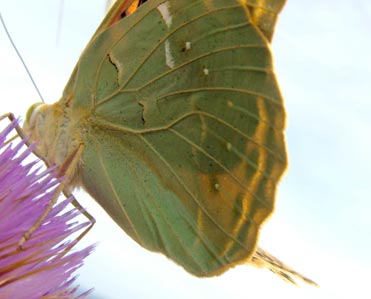
I feel pretty confident about its identification (please!), and that the photograph is my own, taken on the edge of the Montsant range in mid-June. In Catalunya the Cardinal is is a rare and localised species which shows significant variations from year to year.
If interested in these attractive insects you could do much worse than download a pdf of Cynthia, the bulletin of the CBM scheme (Catalan Butterfly Monitoring).
Now you know what to do with those long, hot summers: when the birds go quiet, take a glance at the butterflies.
Posted in Birding and wildlife trips | 1 Comment »
Regular visitors to the BirdingInSpain.com blog might have noticed a lull in blogging activity over the last few weeks. Well, summer’s here, it’s close to 40ºC outside, and most birds are clever enough to be keeping a very low profile in this part of northeast Spain. Not just that, but the heat sizzles the brain a little, making it hard for an amateur blogger like myself to come up with something fresh and stimulating.
Here’s the offering. I don’t know if it’s fresh, but it should be a little stimulating. So make sure you tackle this new bird silhouette competition after the sun goes down, so as not to suffer from neuron meltdown.
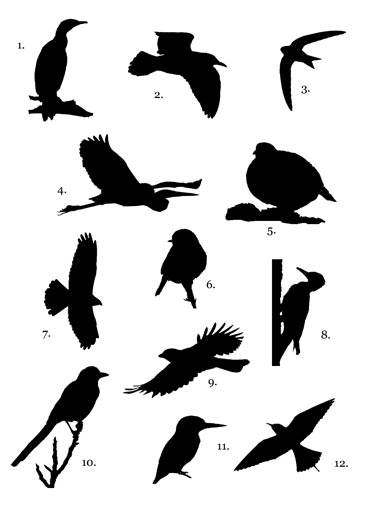
Winners get to buy me an ice-cold drink.
Posted in Competitions | 2 Comments »








